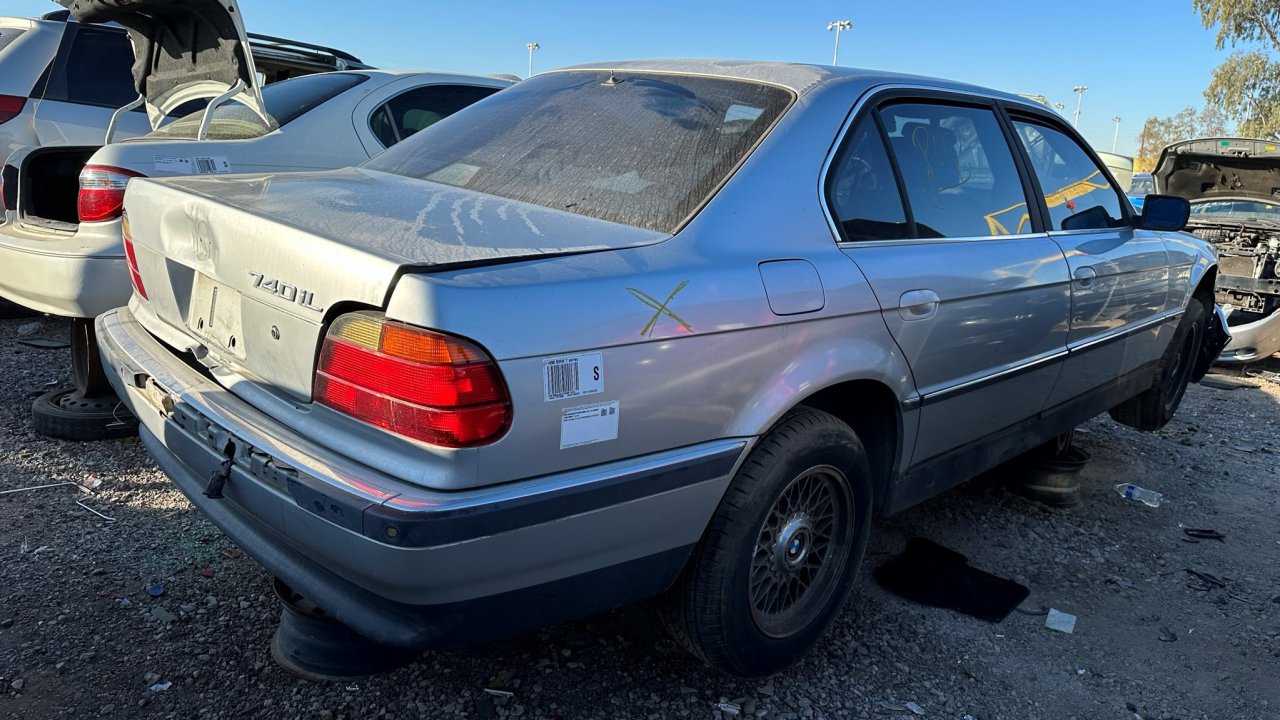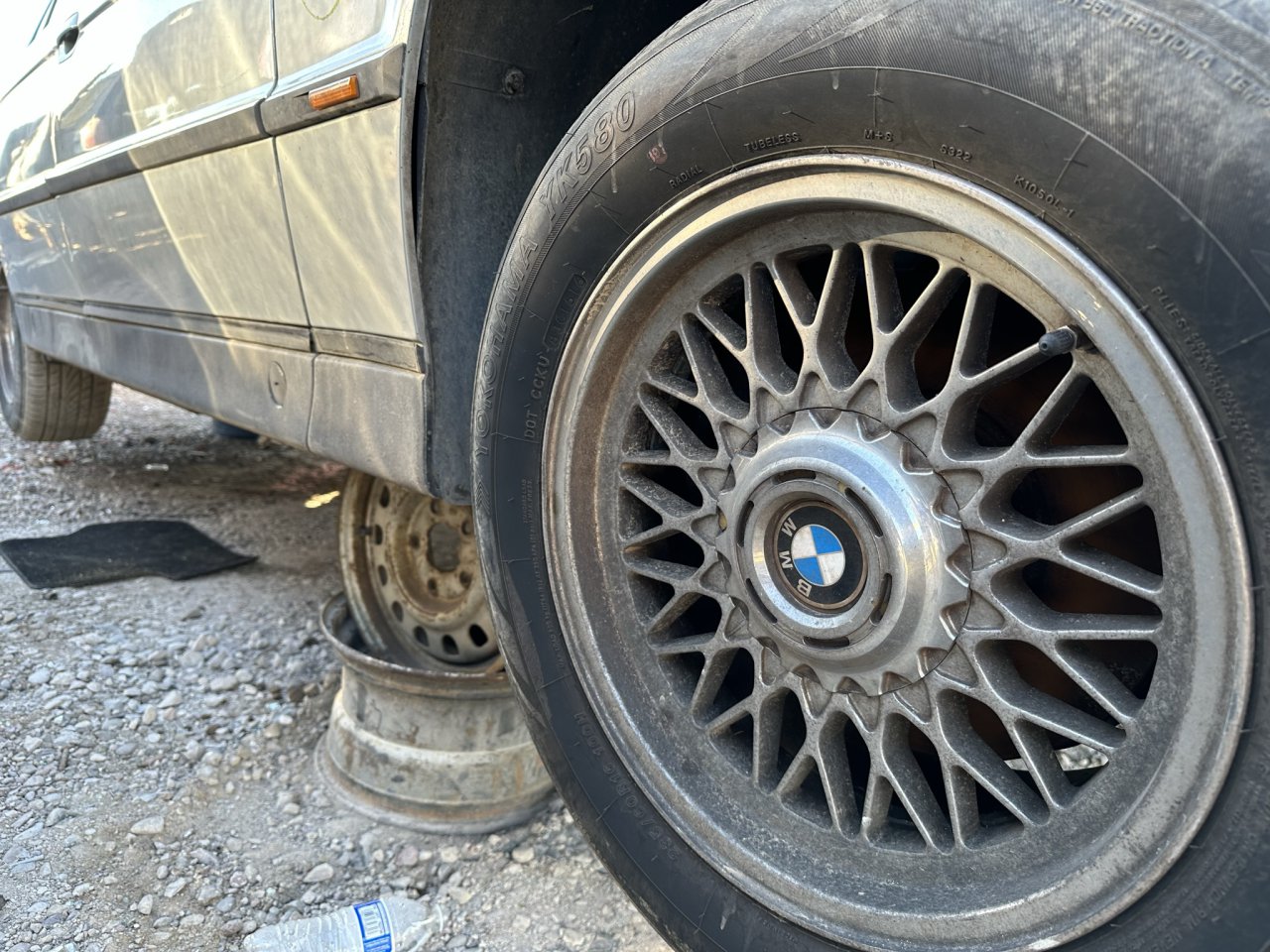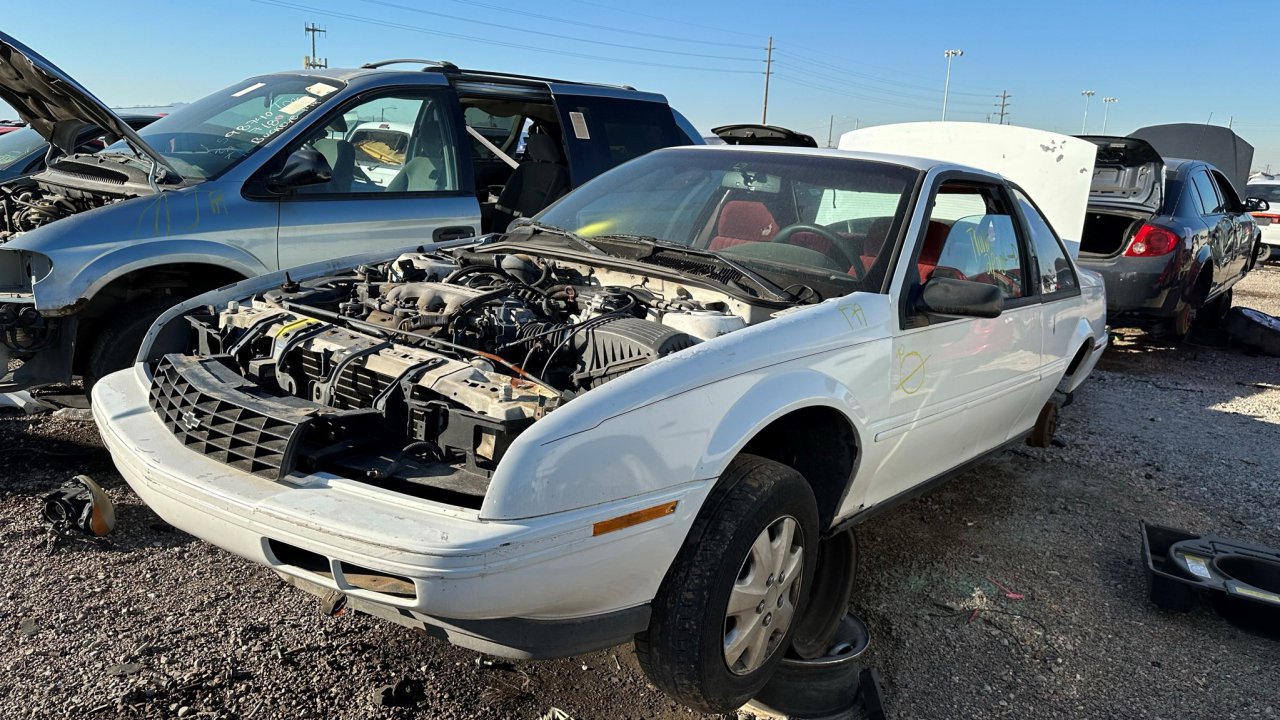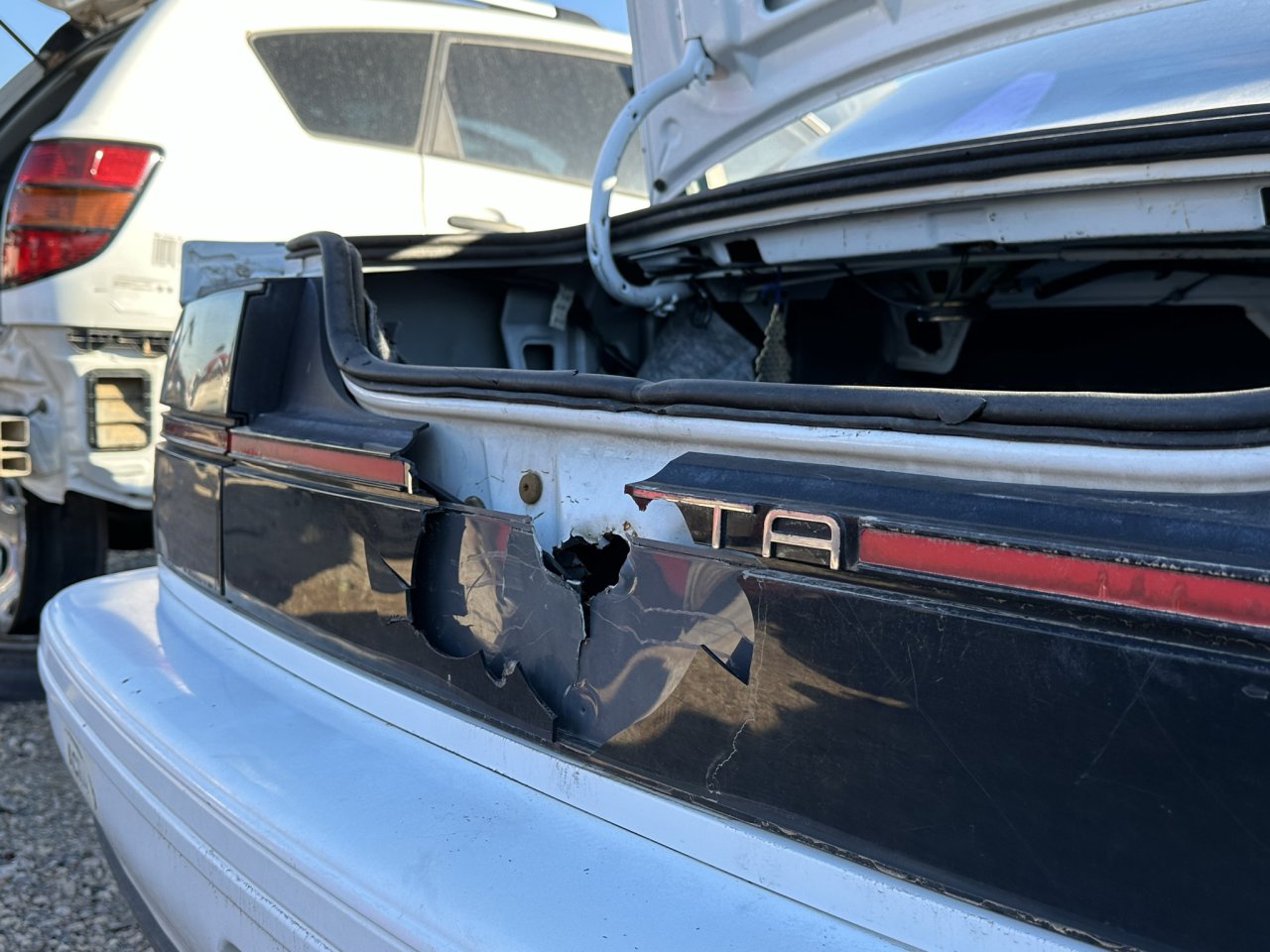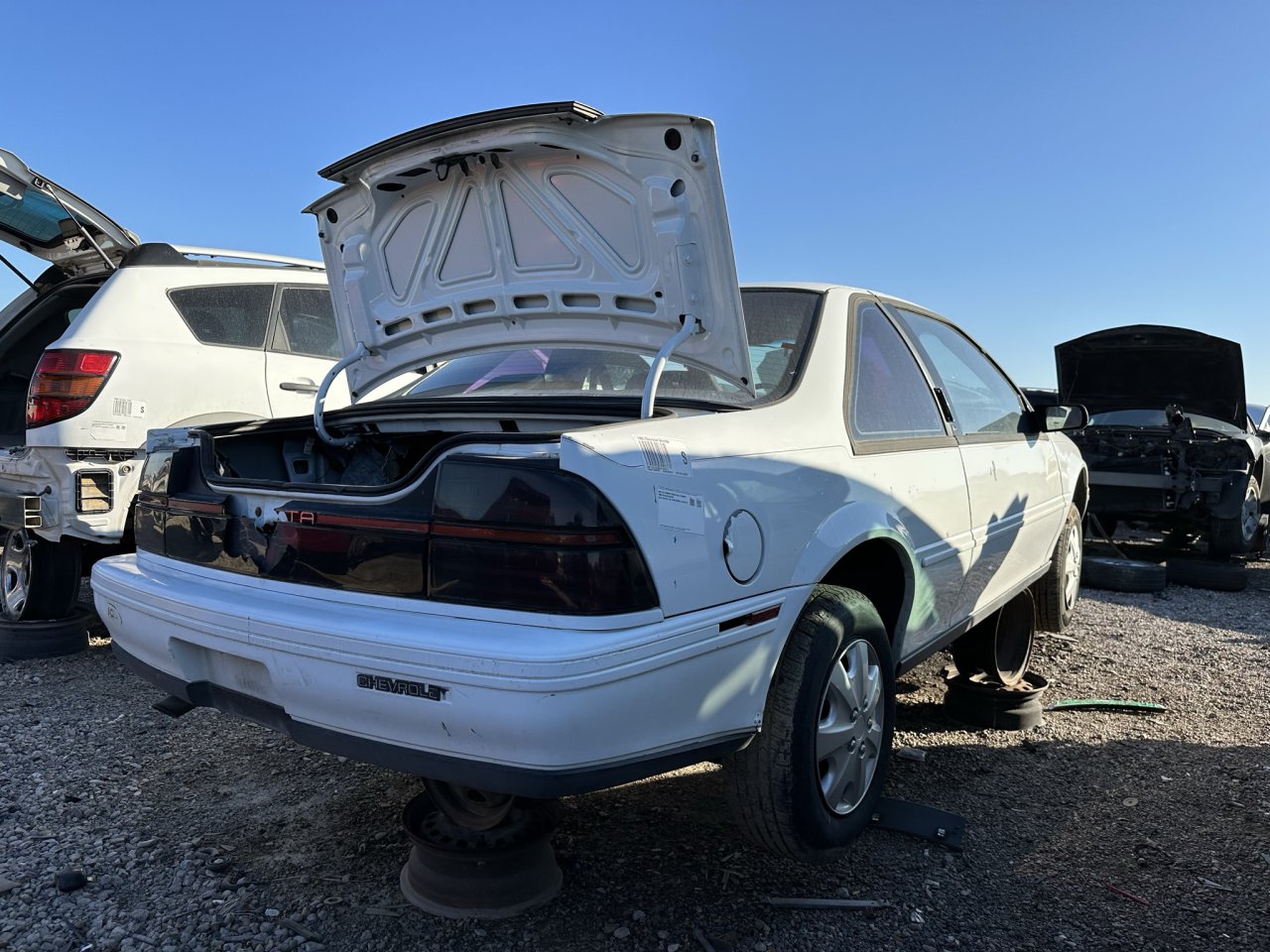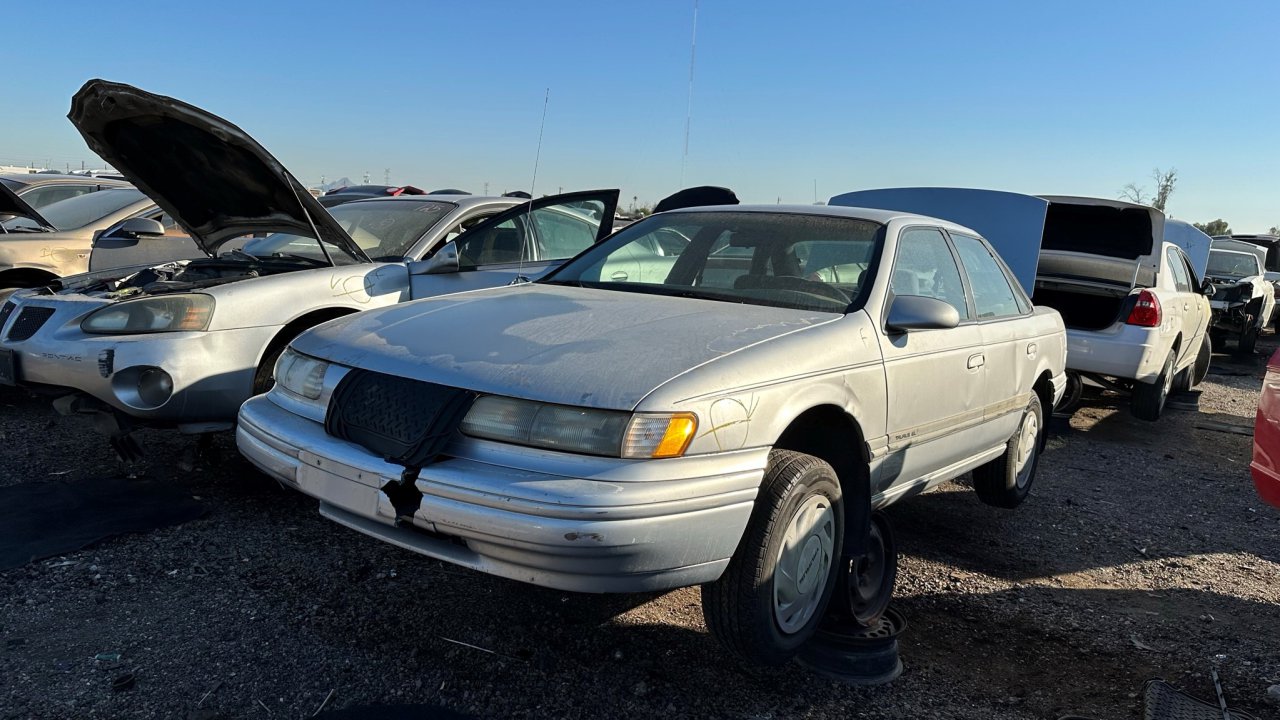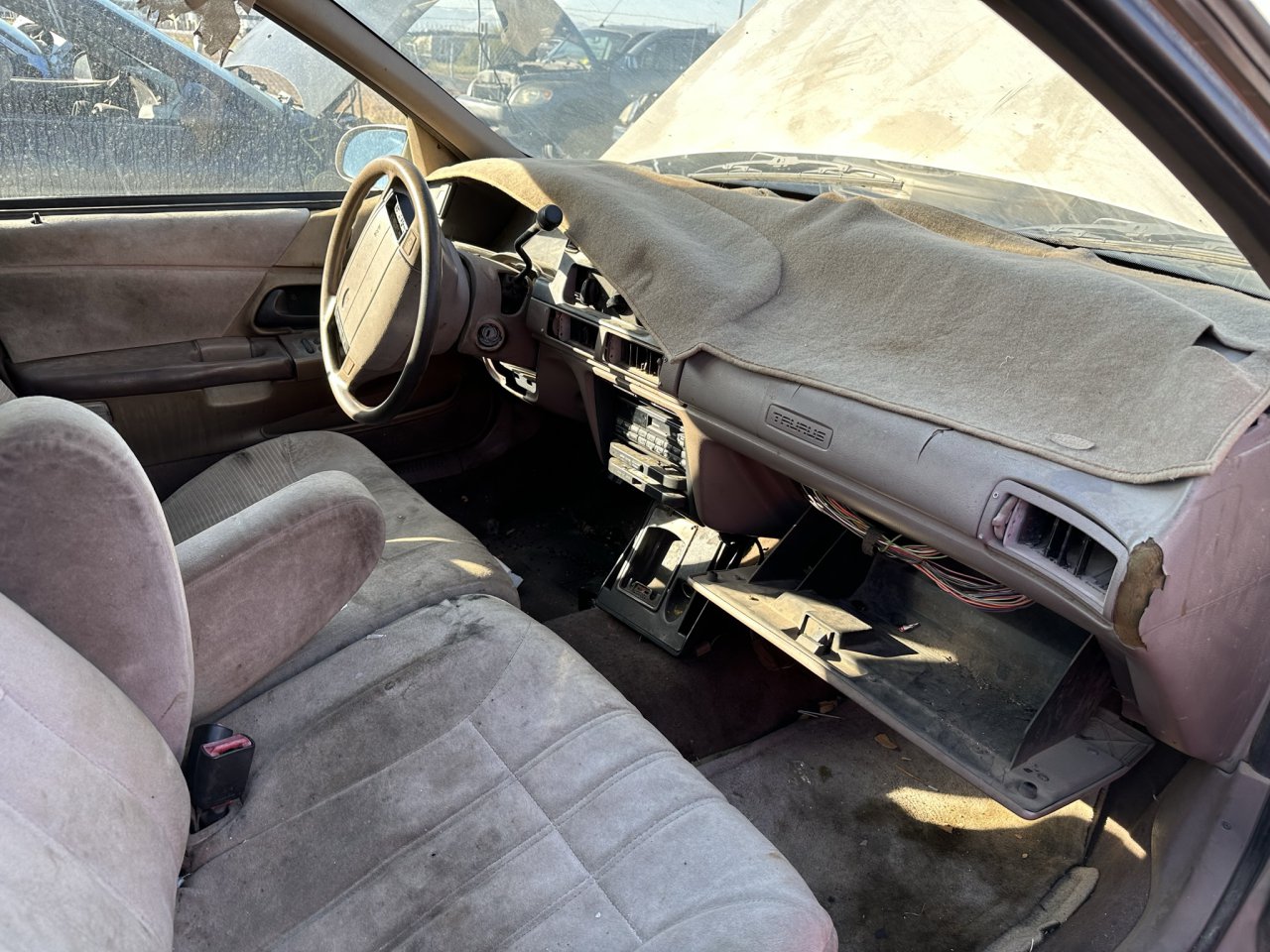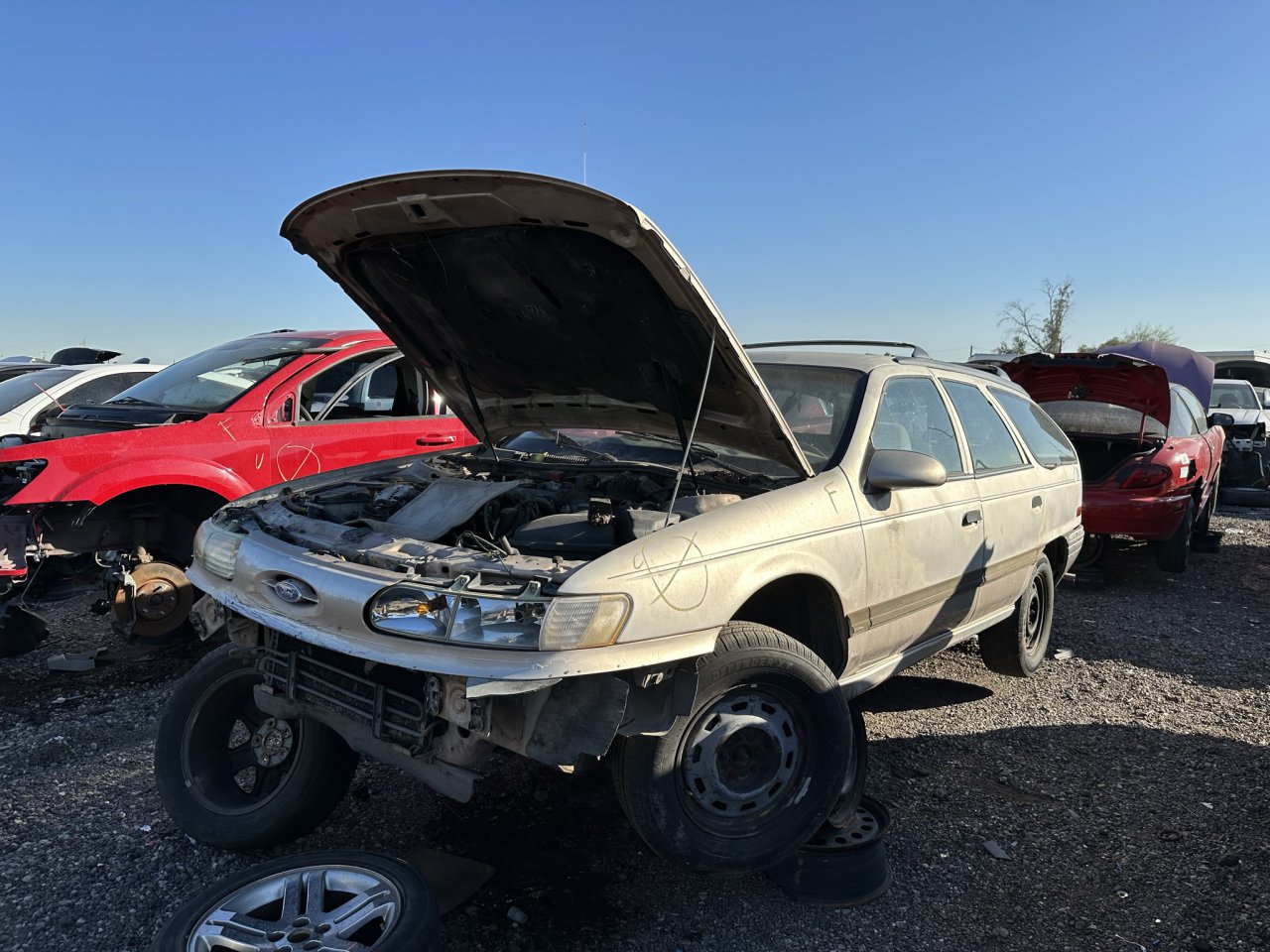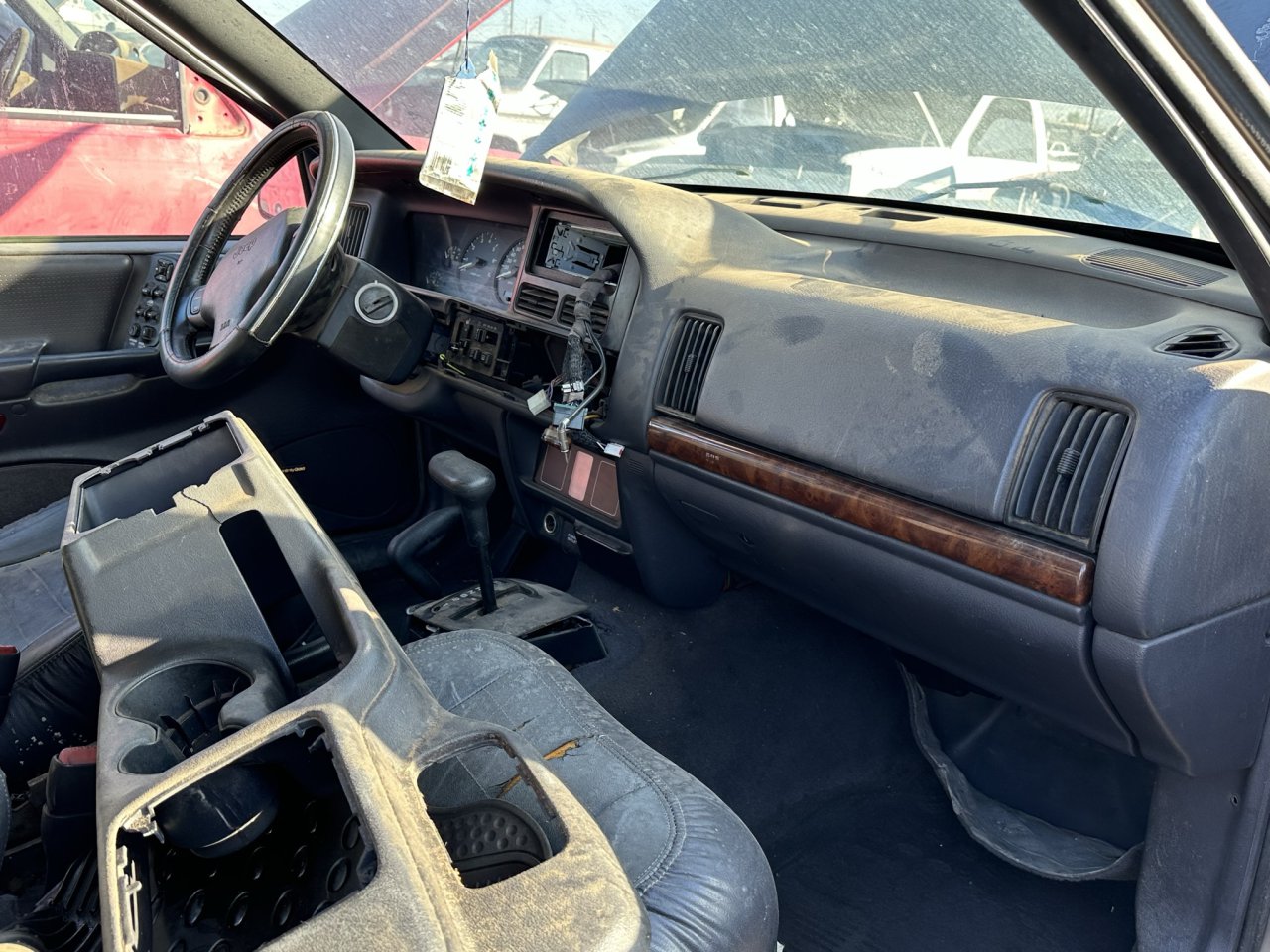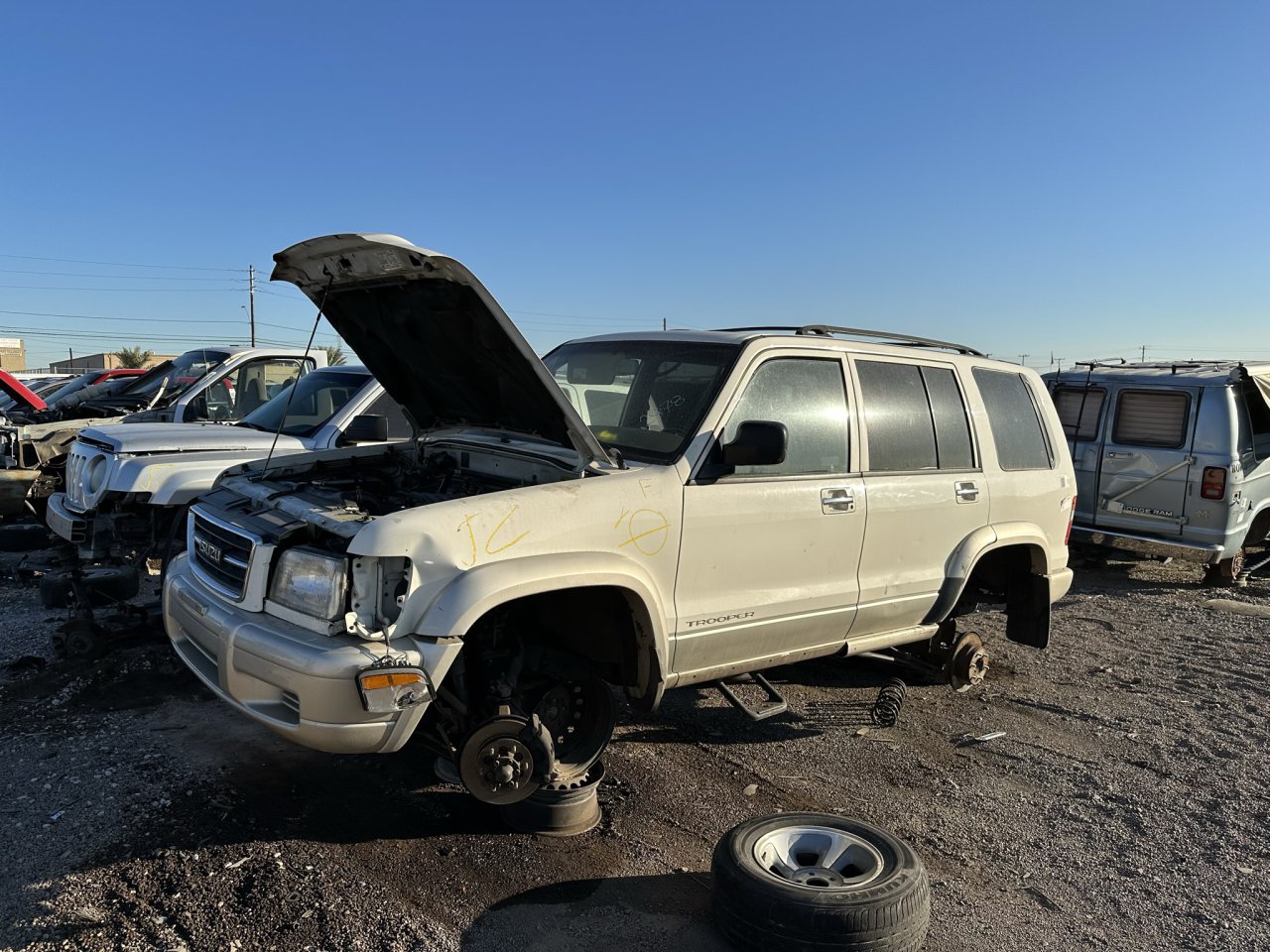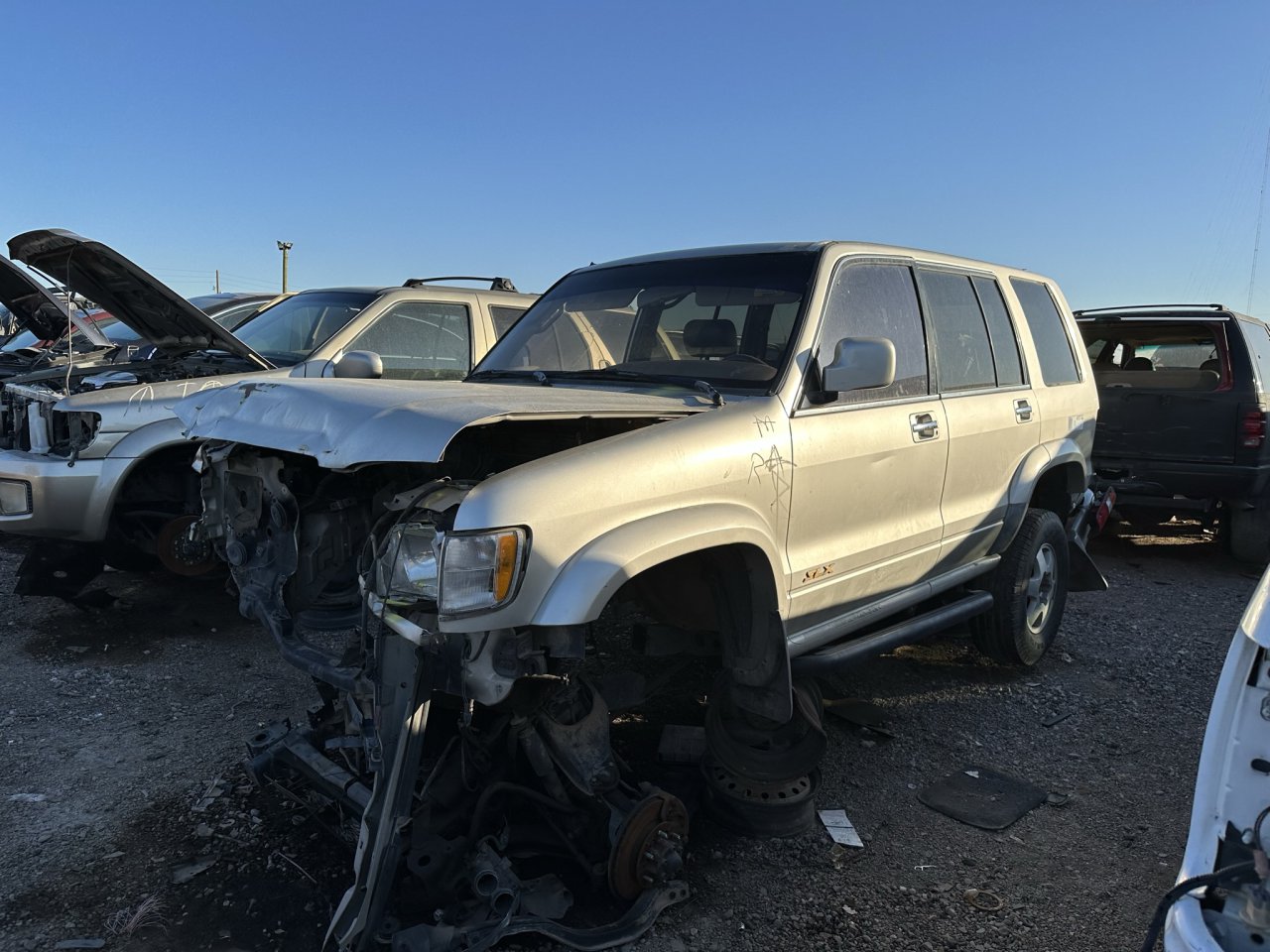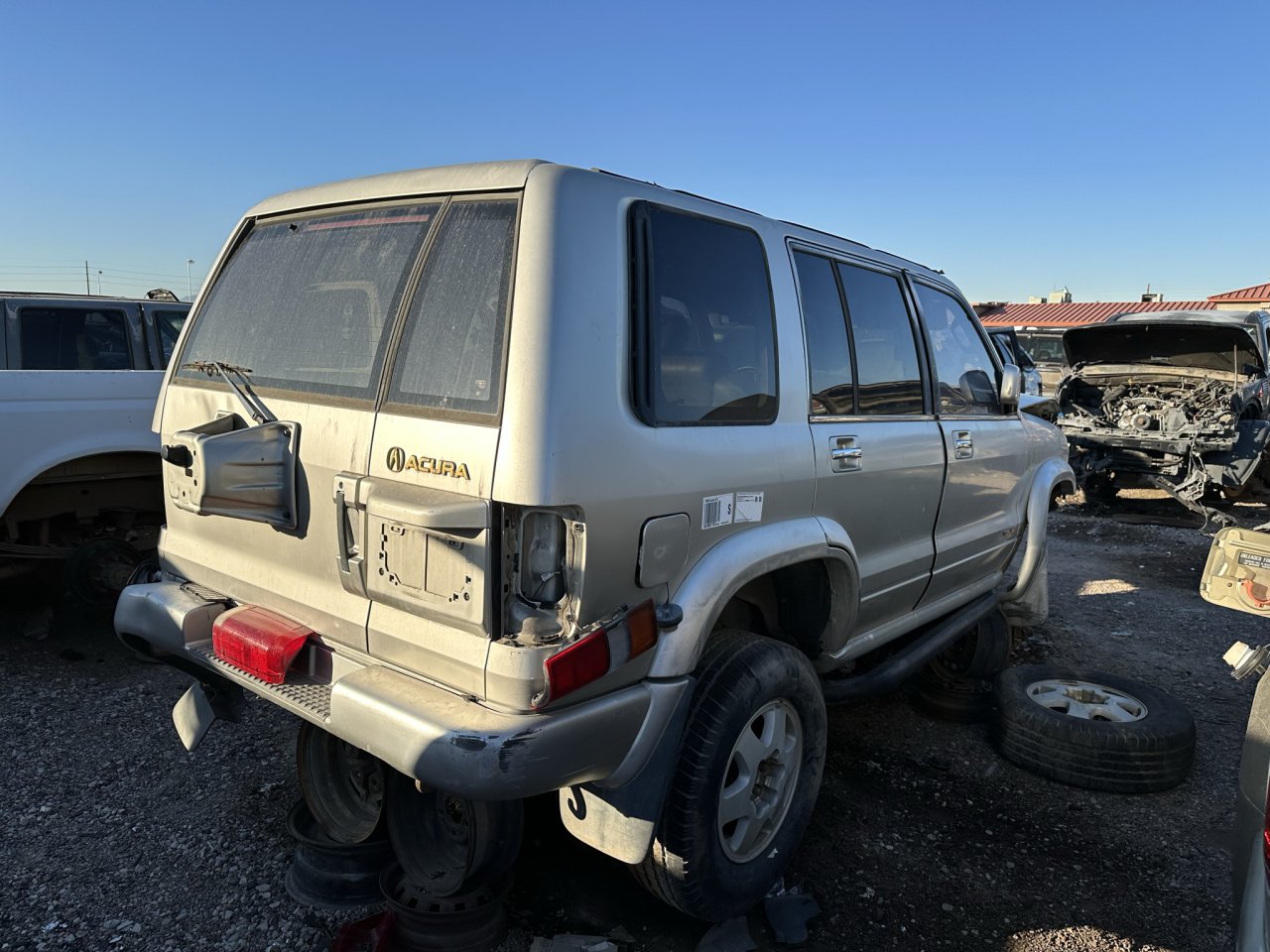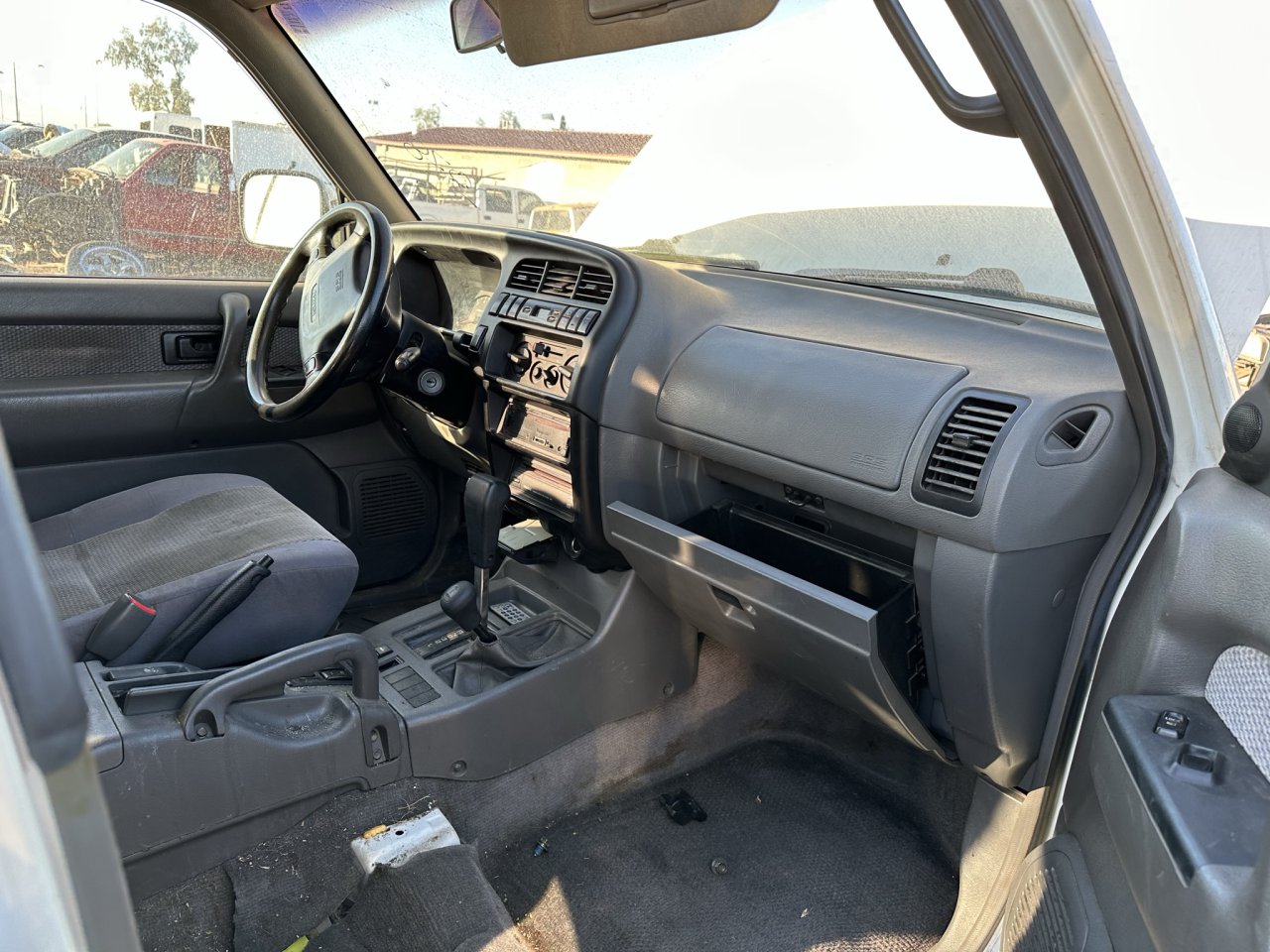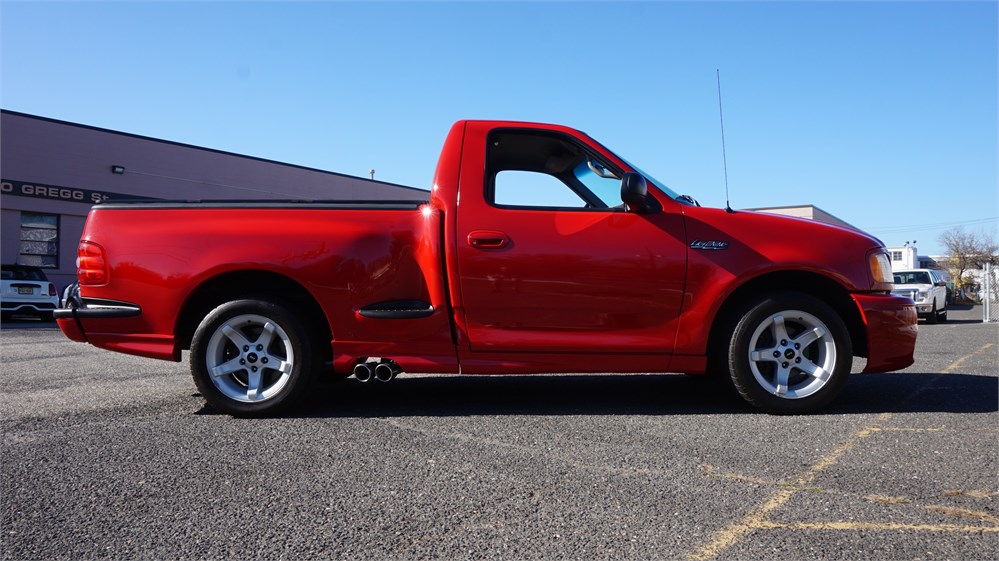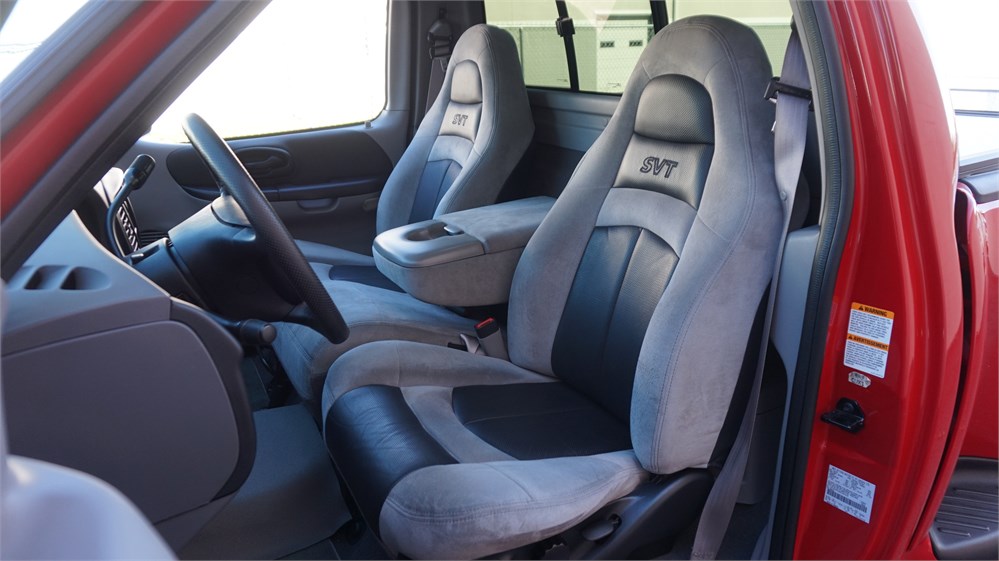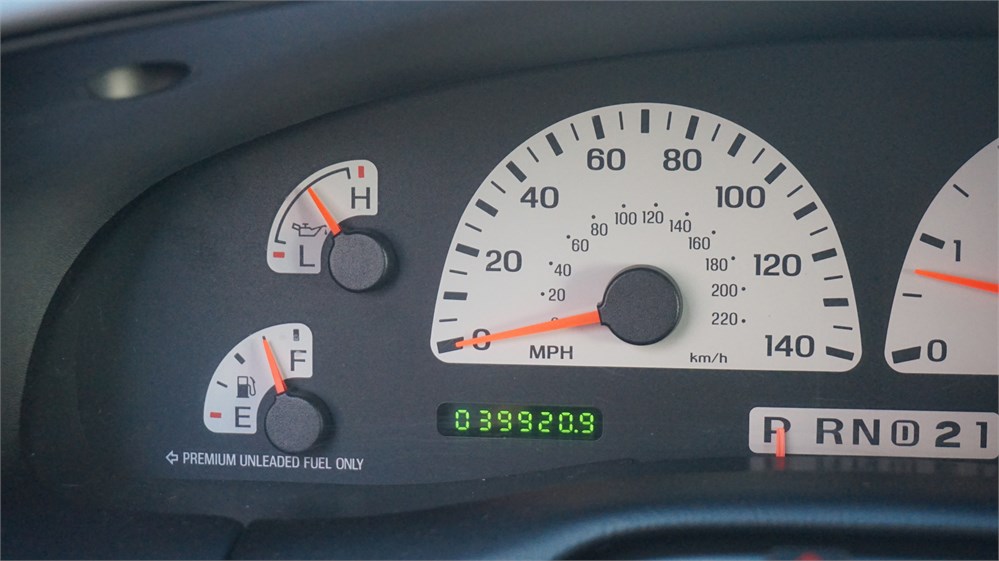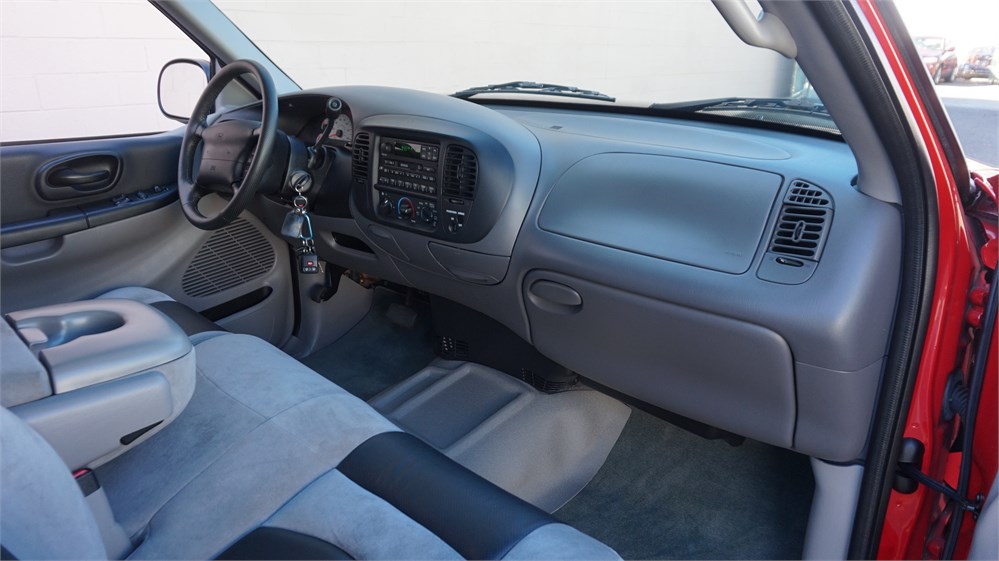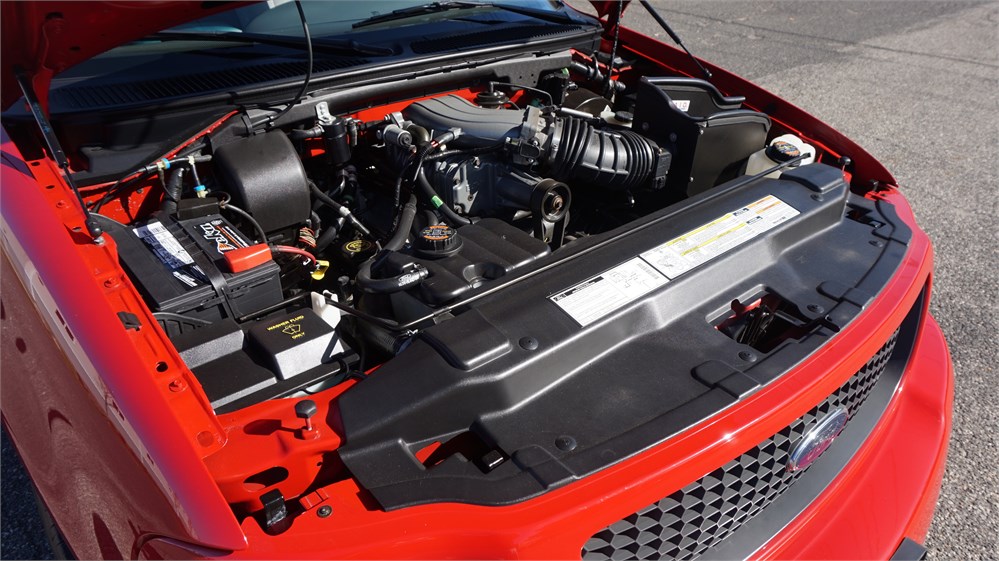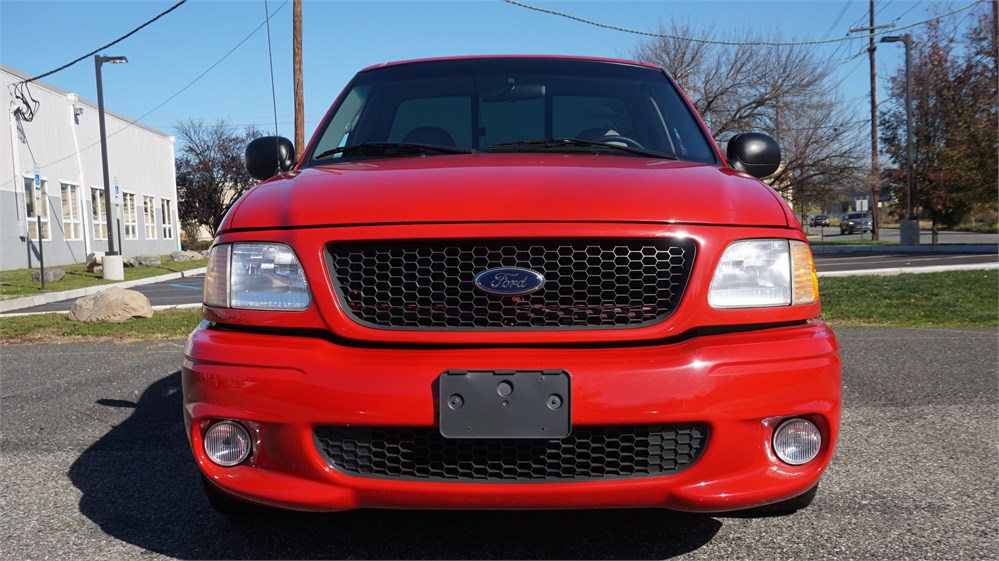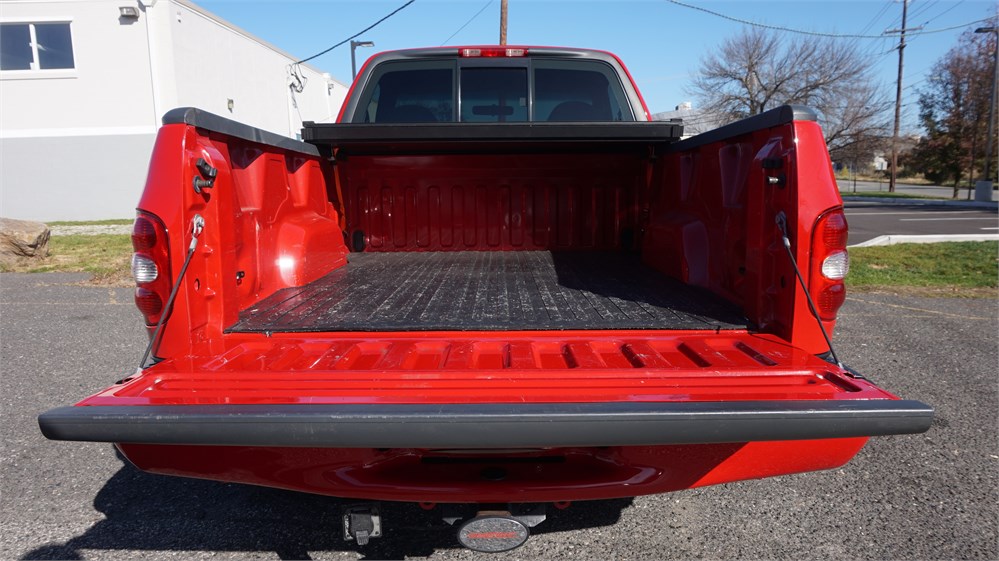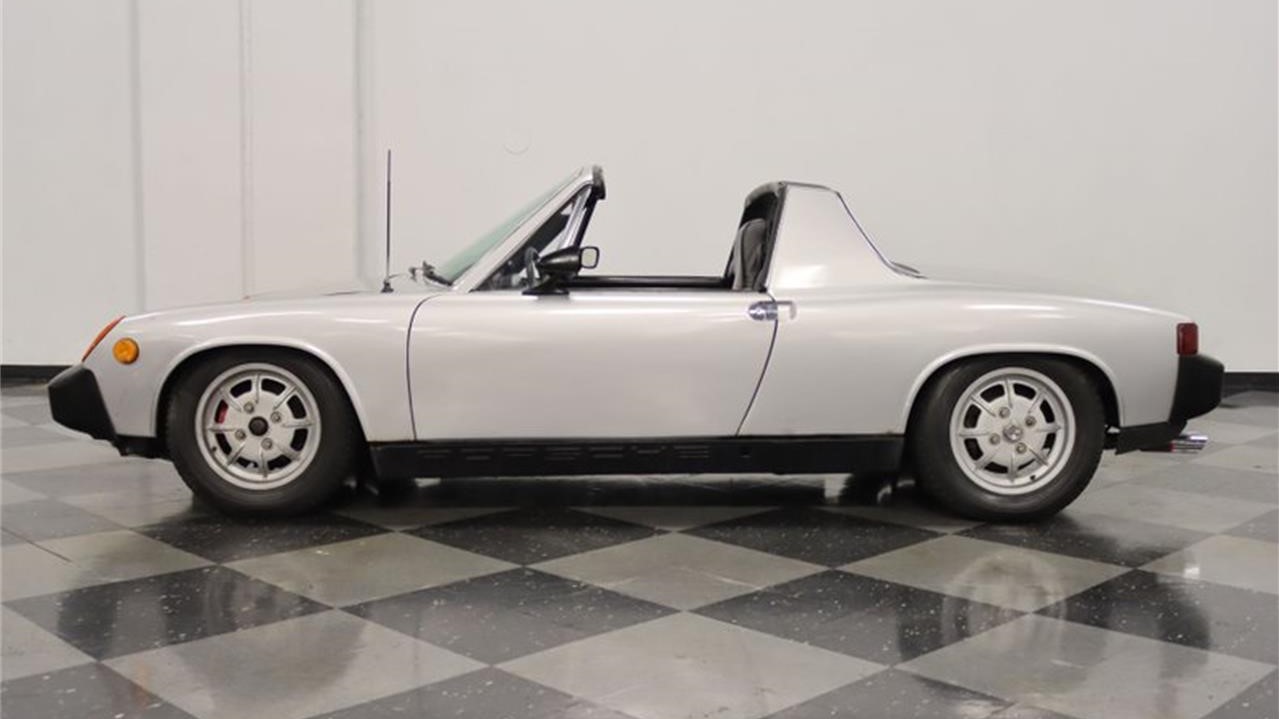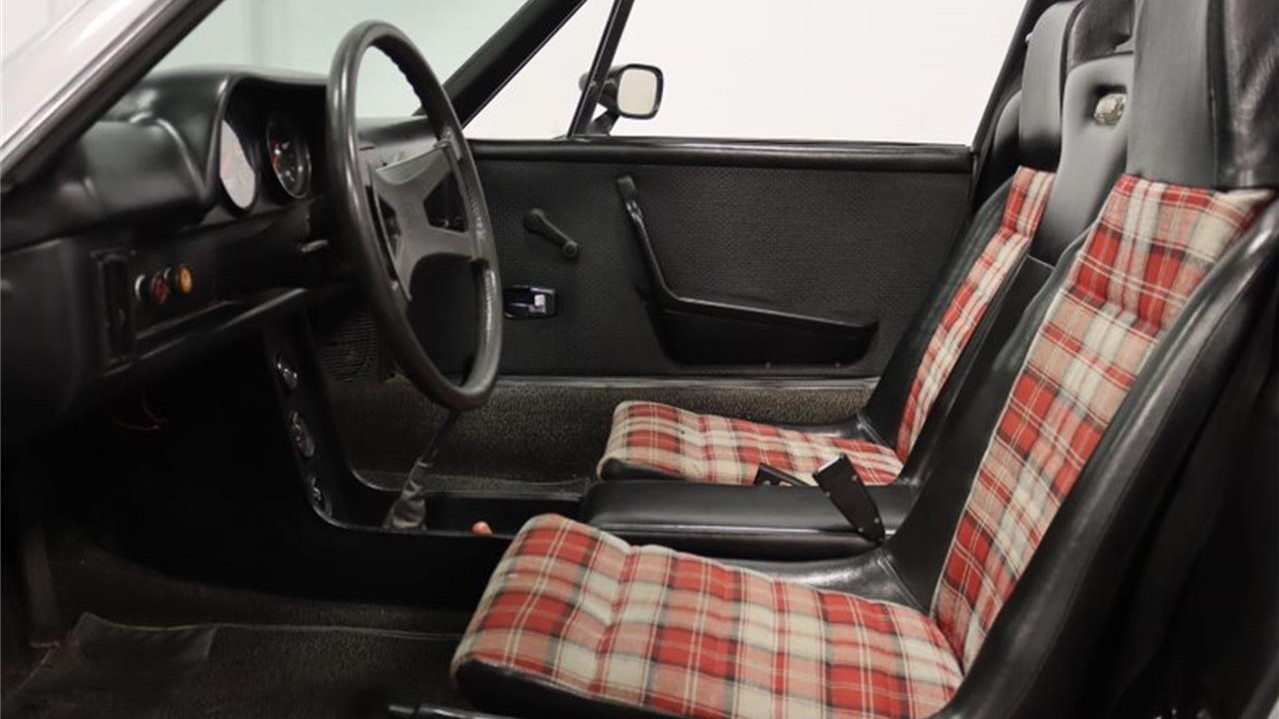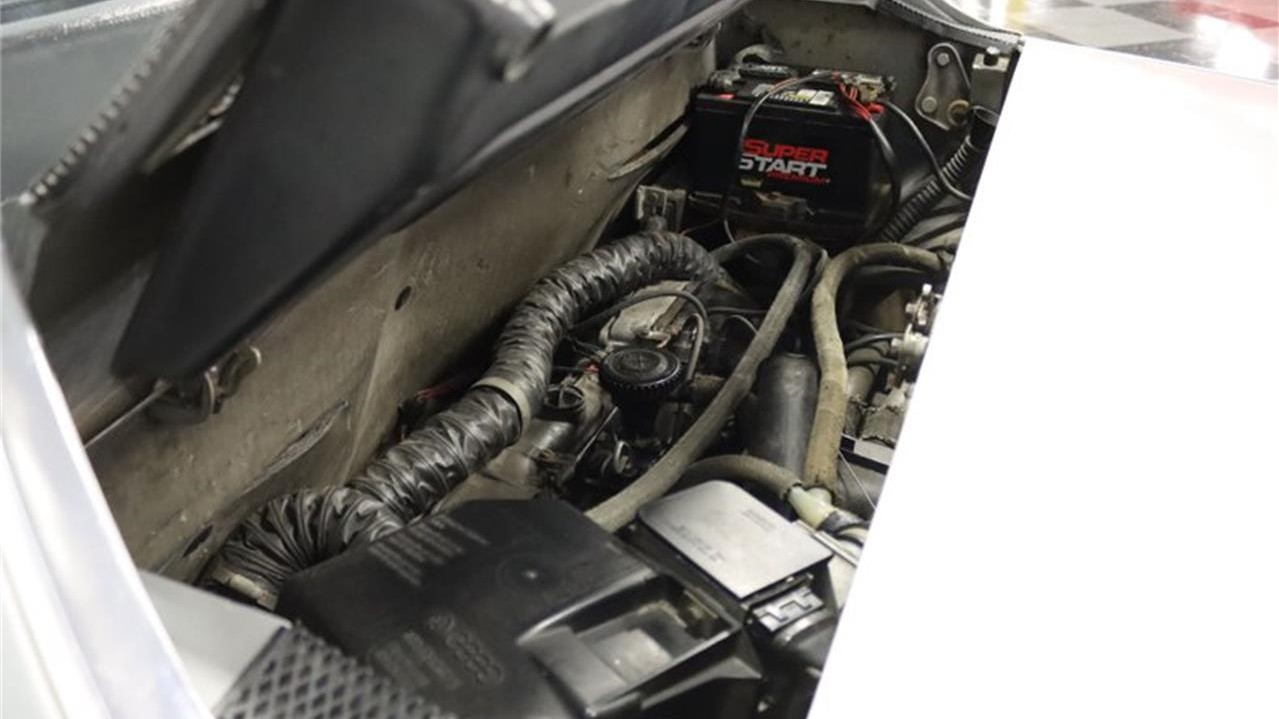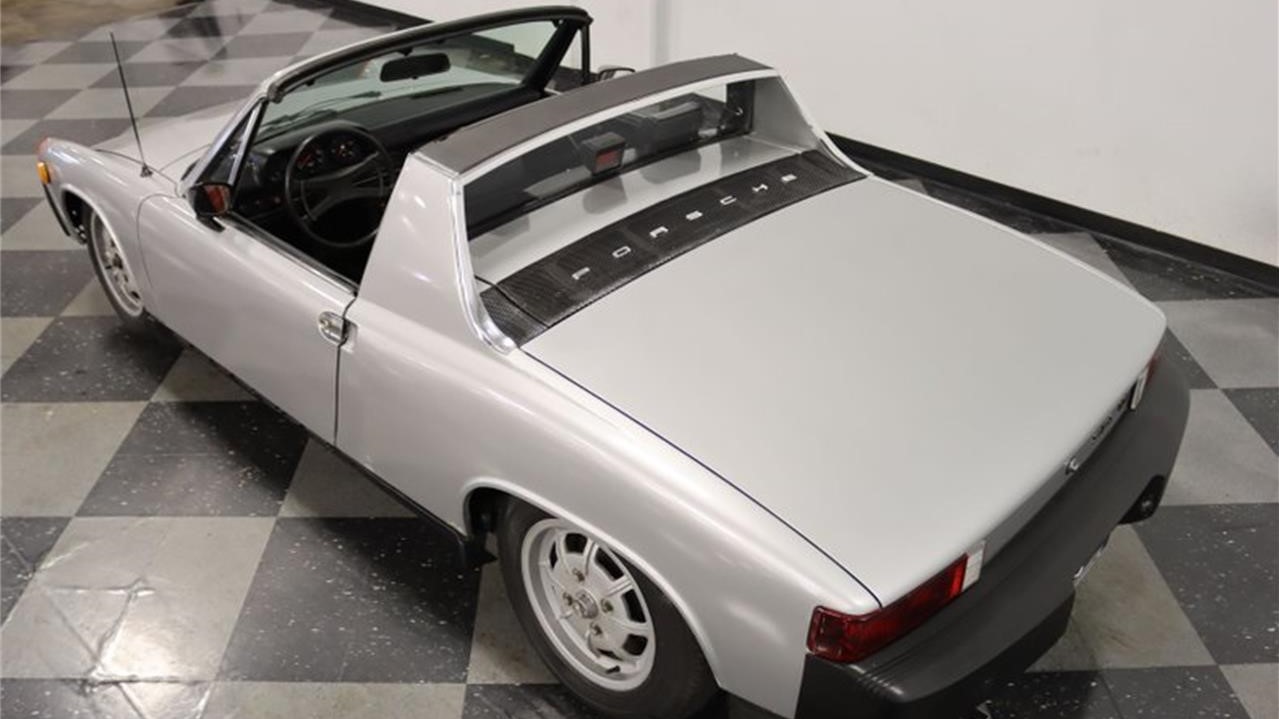Ever lock eyes on someone and, though you’ve never met, you’re sure that you know them from somewhere? Celebrities have stories like this all the time—particularly when they’re mistaken for another celebrity. But it happens to us plebes in the weeds as well. Unsurprisingly, it happens with cars, too. And sometimes it all works out for the best.
Sadly, little is currently known about this ’69 Camaro SS/RS convertible’s former life or owner(s); the only information that’s come to light is that it was built in the Norwood, Ohio, plant in December of ’68, was delivered in or near Memphis, Tennessee, and was owned by a schoolteacher. “Paperwork was lacking,” its restorer, Shaun Price, of Shaun Price Restorations in Gilbert, Arizona, tells us. This may well have been because Shaun’s client, owner Al Serrato of Temecula, California, bought a car that was essentially in pieces— torn down by a previous owner who either misplaced or chucked its records.
![Color closeup of the Camaro script on a 1969 Chevrolet Camaro SS/RS convertible, above head lamp, driver side.]()
Photo by Jeff Koch
And like that person you feel you know but you can’t remember from where, this Camaro also looked strangely familiar. “We saw the Camaro for sale online in 2011 and ’12; the seller had it up there for months as an unfinished project at an exorbitant price,” Shaun recalls. “It wasn’t abandoned—I think he ran out of money and/or interest, and that was probably the catalyst for sale.” Al and Shaun were interested—a factory red Camaro SS/RS convertible is bound to get the interest of quite a few collectors. But at the $85,000 asking price, it sat. And sat. Every now and again, the price would drop by ten grand. “And one day,” Shaun says, “it disappeared from the site. Either the seller had given up, or it had sold.”
Now, Shaun has a neighbor who occasionally flips cars for fun and profit, so haulers dropping cars off there is never a big deal. “He came over and asked if I’d help the transport driver get the car out—it was just a rolling chassis and had no brakes. We get it out of the transporter and the lightbulb blinks on.” No fair guessing whether it was this very Camaro they’d been watching—it was. “My neighbor bought it in… let’s call it an emotional moment. He’s known for paying too much for things. But Al and I had watched this car for months online, and now it’s here in front of me in my neighbor’s yard. I mean, what are the odds?”
![Color closeup of the tail lamp assembly and Camaro script on the trunk of a 1969 Chevrolet Camaro SS/RS Convertible.]()
Rally Sport package included unique taillamp lenses with horizontal split and separate reverse lamps.Photo by Jeff Koch
Shaun now had a chance to look first-hand at the car that he was hemming and hawing over previously. “I could see what we had and didn’t have, unlike reading a description in an ad and having to hop on a plane to go look at it. What we saw was a rolling car, fairly complete, but it needed a correct restoration in order to be finished. It had been painted and that’s where it stopped. Everything on it was date-coded correctly. All of the panels had original date-codes stamped when we got them, so everything was in line — nothing we found was a service-replacement item. Anything that had a date on it lined up with the car. The trunk floor was original, but I bet someone put floors in it; I can’t confirm that, though. Whoever did the work on the body and the paint did a nice job.”
It was a Camaro like one Al had been looking for. It was all there, all correct and complete. At Al’s urging, Shaun pulled the trigger. “I told my neighbor, ‘You paid how much? I’ll give you ten percent more right now.’” The deal was done, and they rolled it into Shaun’s workshop across the street. The goal, as it was with all of Al’s cars, was to get it as close to showroom-correct as could be managed.
![Color closeup of the hood vents on a 1969 Chevrolet Camaro SS/RS convertible.]()
Super Sport package included a special domed hood with chrome inserts.Photo by Jeff Koch
Combining the SS and RS packages got a respectable amount of equipment and trim goodies. The SS included the special hood with simulated air intakes and an insulation pad, the standard grille would be blacked out with most body colors, as would the rocker panels below the moldings; SS emblems would appear on the grille, fenders, and rear panel. The SS also included 14 x 7-inch wheels and F70-14 Wide-Oval tires, and the all-important chrome air cleaner lid for the standard L48-code 300-hp 350 four-barrel engine.
Meanwhile, the Rally Sport option provided the “hideaway” headlamp treatment with an alternate grille design, and the taillamp lenses had a single horizontal split, rather than the standard twin vertical segmentations. Reverse lamps moved down into the rear valence panel on the RS.
![Color closeup of the engine bay in a 1969 Chevrolet Camaro SS/RS convertible, 350/300 small-block V-8.]()
Chevy’s base engine for the Camaro SS was a 10.25:1 compression, four-barrel, 300 gross horsepower, 350-cubic-inch small-block. Plenty were built with “nice car” options like automatic transmission and air conditioning.Photo by Jeff Koch
When the SS and RS packages were combined, the SS emblems bumped out the RS pieces on the grille and tail panel, and the “Rally Sport” badging that would be found on the fenders of a regular Camaro RS (or a Z/28 RS) was also left off in favor of the standard “Camaro” scripts with “SS” emblems beneath, just as they would appear on a non-RS Camaro Super Sport.
This example of the SS/RS was a highly optioned Garnet Red convertible with red interior. Shaun reports, “It has the matching-numbers engine, transmission, and rear. Well, it has the driveline it was born with, anyway. It’s got a 12-bolt 3.55:1 with Posi, because with air and automatic you couldn’t get anything as high as 3.73:1.” Also included were a plethora of options: air conditioning, tilt steering column, a power convertible top, power windows, space-saver spare, Endura front bumper, console, gauges, fiber-optic lamp monitoring, Deluxe interior, whitewall tires (which were a factory upgrade), and… an AM radio.
![Color closeup of the Rochester Quadrajet carburetor in a 1969 Chevrolet Camaro SS/RS convertible.]()
Photo by Jeff Koch
“When you ordered the AM radio, you had the option to order a rear-mounted antenna,” Shaun explains. “The AM/FM radios had a fixed manual antenna on the front fender. That antenna on the rear fender would make the D80 spoiler package unavailable. I mean, it could have had the stereo 8-track, cruise control, and some other foo-foo stuff, but overall it was well-optioned, despite being a base 350-powered car.”
All of this was above and beyond the RS goodies (fender striping, hideaway headlamps with washers, the Style Trim group to add a variety of brightwork and black sills, et al) and what was mandated with the SS package (300-hp 350, floor-shift, Turbo HydraMatic in lieu of Powerglide, power front disc brakes and lots more).
![Color image of the interior, dash, seats, floor, steering wheel etc. in a 1969 Chevrolet Camaro SS/RS convertible.]()
Factory red Comfortweave interior was remade with possibly the last NOS bolt of original fabric from the burned-down factory; there are options galore in here like gauges, tilt wheel, air conditioning, and more.Photo by Jeff Koch
What was missing? “Let’s put it this way: we had parts, it wasn’t missing much, and all of the important stuff was there, but the condition of the parts needed to be updated from what we acquired with the car. The quantity of NOS stuff we had to come up with to finish it was staggering.” Shaun says.
For example? “The dashpad. It needed one, and the air-conditioned cars have a specific dash pad. Lo and behold, I heard about a guy just three miles north of me who bought an NOS dashpad in the late 1970s — and it was still in the original GM box. And it was for an A/C car! Things like that happen occasionally, but it’s not that common. NOS parts are getting ever-more-difficult to find.”
![Color closeup of the wheels on a 1969 Chevrolet Camaro SS/RS convertible.]()
Photo by Jeff Koch
And the lug nuts! “They’re correct assembly-line lug nuts that were used on those 14-inch SS wheels in 1969 and ’70 only. Those things are unobtainable. We paid $50 for each lug nut — that’s $1,000. For lug nuts! The guy who sold them to us had a few left afterward, and he ended up selling them for $100 apiece,” Shaun notes.
There’s more — even in places you wouldn’t think would matter. “The alignment shims are actually GM assembly-line items. Between the shims and the lug nuts, man, that’ll send you over the edge. We found what was likely the last NOS red Comfortweave material anywhere, in Detroit. The original plant that made it burned down years ago, and reproduction stuff doesn’t have the same pattern. The seatbelt webbing was tough to find NOS, too.”
![Color closeup of the fender, side marker and wheel/tire on a 1969 Chevrolet Camaro SS/RS convertible.]()
Photo by Jeff Koch
Shaun continues, “Ultimately, every component had to be disassembled and redone, or else replaced. Stuff that the previous owner had done was junk — most of it either didn’t work right or simply hadn’t been addressed. This car was one of those where you had to sit there and go through everything piece by piece for it to work correctly in the end.”
Even the decent paint was given the once-over. “I had to disassemble the car, then painted both underneath and the firewall; the previous painter painted the firewall and chassis the same glossy red as the body, and I had to re-do it the way the factory did it [in black]. I also fixed some body chips and deficiencies along the way. Also, doing the blackout on the rockers, I made sure that it faded with a fuzzy line, like the factory did on the assembly line. I replicated that off an original car too, another Norwood car. We also repainted the hood and decklid thanks to poorly stored parts, where something nicked or chipped the paint.
![Color closeup of the trunk and spare of a 1969 Chevrolet Camaro SS/RS convertible.]()
Photo by Jeff Koch
“On the original convertible top rear window, there should be a manufacturer’s logo and a date code that the reproductions don’t have. I found an original-top car, photographed that logo, and had that and the build date reproduced on the rear window,” Shaun says. There are even factory-style markings on the treads of the tires, which you’d think would be the first thing to wear off. Except…
“Al keeps this car in the lobby of his office,” Shaun says of the Camaro that has taken pride of place in its owner’s eyeline. It’s been there since 2014. The good news: this as-new SS/RS ’69 Camaro convertible is being enjoyed, even if it’s not wearing those tire markings off.
![Color closeup of the clock in a 1969 Chevrolet Camaro SS/RS convertible]()
Photo by Jeff Koch
SPECIFICATIONS
PRICE
Base price: $2,852
Options on car profiled: Super Sport package, $507; Turbo Hydra-Matic automatic transmission, $585; Rally Sport package, $131.65; air conditioning, $376; tilt wheel, $45; power steering, $95; power brakes, $42; whitewall tires, $32; console, $54; AM radio, $61; power windows, $105; front disc brakes, $22; tinted glass, $31; gauges, $90.
ENGINE
Type: Chevrolet “small-block” OHV V-8, cast-iron block and cylinder heads
Displacement: 350 cu.in.
Bore x stroke: 4.00 x 3.48 in
Compression ratio: 10.25:1
Horsepower @ rpm: 300 @ 4,800
Torque @ rpm: 380 lb-ft @ 3,200
Valvetrain: Hydraulic lifters
Main bearings: Five
Fuel system: Rochester Quadrajet four-barrel, mechanical pump
Lubrication system: Pressure, gear-type pump
Electrical system: 12-volt
Exhaust system: Dual exhaust with transverse cross-flow muffler
TRANSMISSION
Type: GM Turbo Hydra-Matic 350 three-speed automatic
Ratios: 1st/2.48 … 2nd/1.48 … 3rd/1.00 … Reverse/2.08
DIFFERENTIAL
Type: Chevrolet 12-bolt housing, Positraction
Ratio: 3.55:1
STEERING
Type: Recirculating ball-nut, semi-reversible with hydraulic power assist
Turns, lock-to-lock: 2.8
Turning circle: 37.5 ft
BRAKES
Type: Hydraulic disc/drum with vacuum power assist
Front: 11-in disc / Rear: 9.5 x 2.0-in drum
SUSPENSION
Front: Independent, unequal length A-arms; coil springs; telescoping shock absorbers; anti-sway bar
Rear: Parallel leaf springs, telescoping shock absorbers
WHEELS & TIRES
Wheels: Styled stamped steel, drop center Front/Rear: 14 x 7 in
Tires: Bias-ply, white-stripe Front/Rear: F70-14
PRODUCTION
Chevrolet produced 16,519 Camaro convertibles for the extended 1969 model year. Chevrolet also produced 37,773 RS and 36,309 SS Camaros for the year, but no records of how many SS/RS cars exist, regardless of body style.
PERFORMANCE
0-60 mph: 6.4 sec
1/4-mile ET: 15 sec @ 93 mph
![Color image of a 1969 Chevrolet Camaro SS/RS convertible parked in the desert, rear 3/4 position.]()
Photo by Jeff Koch

